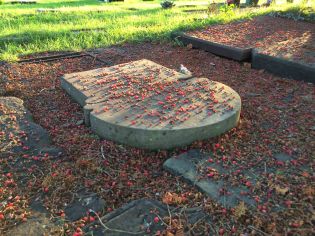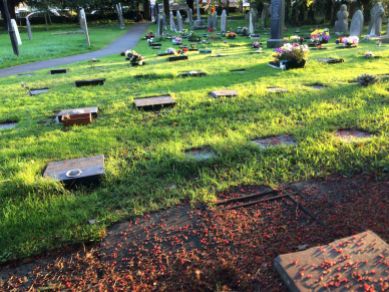Just over 84 years ago, on 22 Sept 1934, 266 men were killed in the Gresford mining disaster.
I recently revisited All Saints church, Gresford with my second-year Contemporary Past students, where we encountered the mural memorial to the disaster in the north wall of the east-end of the south aisle. I wish to discuss the memorial, but emphasise how it gains its significance not only through its composite form, but also from its sacred and memorial environment: its juxtaposition in relation to a nested and complex memoryscape of Roman, medieval and modern memorials inside the church and outside.
There are three key components to the mining disaster memorial itself. First and centrally, within an arched recess, the mural depicts the above-ground scene of the disaster. There are multiple images here, showing different aspects of the disaster and its aftermath. The main scene shows the colliery buildings including the prominent pithead wheels that inspire the form of the outdoor memorial at Pandy. Hope Mountain – the local landmark – frames the scene. The miners and their families are shown waiting on the surface for news of the rescue efforts.
Second, on a table in front of the mural, is a book of remembrance, each page containing names of the 266 victims of the disaster.
Fixed to the wall to the right, a miner’s lamp burns in remembrance: the adoption of a standard piece of mining gear as a portable dimension of remembrance, converted to use in a memorial context. Together, they provide a memorial to the greatest disaster to affect the parish and its environs, close to the high altar.

Having reviewed the mural itself, let’s consider its context. The mining memorial is here situated amidst the most ancient in situ memorials in the church: those of the early modern aristocracy of the area, including John Trevor, builder of Trevalyn Hall who died in 1589. Admittedly, there are older, medieval, monuments, but these are mainly dislocated and in more peripheral places in the church in the south and north aisles.
I’ve addressed Gresford before in 3 blog posts specifically. I have described the church’s medieval monuments. I’ve also considered the wider landscape of memory comprising the churchyard, the churchyard extension and the mining disaster memorial. In addition, I discussed Gresford’s churchyard and intramural monuments in relation to the study of death more broadly. Most recently, I’ve augmented this trio of posts through a discussion of the mining disaster memorial again in relation to the post-industrial landscape of the colliery here and here. These provide a series of nested contexts for the mural and informs its mnemonic significance.
The mining memorial has a prominent place but gains its significance through a wider context of the history of death and memory of the parish. Therefore it stands out as a rare 20th-century addition to the church’s interior, complemented by the war memorials in the porch.
As well as being among the newest memorials inside the church, it is situated in relation to the complex environment of the churchyard and its many memorials. Outside, there is a complex landscape of memorials. There are 18th-century memorials – all dislocated and arranged for display. There are many more 19th-century memorials – many dislocated and placed as monumental kerbs and paving for the footpaths through the churchyard.
While late 20th-/early 21st-century memorials are absent from within the church, there is the reutilisation of a prominent portion of the churchyard between the south entrance and the church tower, as the focus of cremation memorials of the last 30 years.
Finally, as well as the official memorials to the First and Second World wars in the porch, there is a temporary display to commemorate the centenary of the Great War: focusing on silhouettes and poppies.

Put all this together, and we can see the mural as an integral part of the wider memoryscape of the church, churchyard and its environs.









